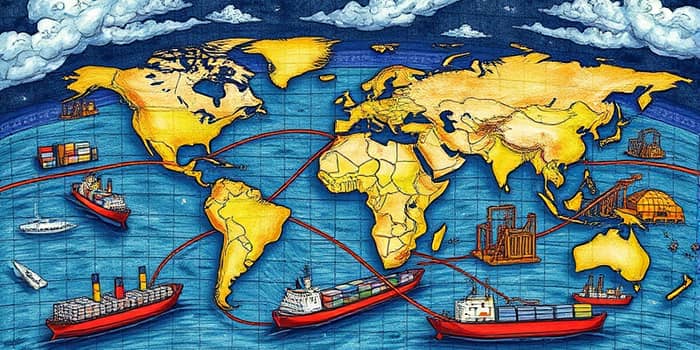
In a world of intricate global trade networks, supply chain disruptions have emerged as a defining threat to industrial performance. Companies across sectors are grappling with unprecedented challenges, forcing a reexamination of traditional models. In this comprehensive analysis, we explore the scope, causes, consequences, and strategies shaping resilient supply chains for the future.
Disruptions are far more than momentary inconveniences. They translate directly into lost revenues and delayed production. Every year, organizations worldwide incur significant financial blows due to interruptions in their supply lines.
According to recent studies, supply chain breakdowns impose an estimated $184 billion annual cost on businesses globally. In a survey of 2,000 European shipping customers, a staggering 76% experienced at least one disruption in the past year, with more than 20 disruption incidents reported by 22% of respondents.
Sectors ranging from retail to semiconductors are all feeling the strain. Automotive manufacturers report delays for critical microchips, while rare metals shortages hamper high-tech production. The ripple effects extend through freight, warehousing, and end-user availability.
A complex web of factors is fueling these interruptions. Understanding their origins is essential for effective mitigation.
The human element of supply chains is under pressure, too. Labor market tightness has become a major obstacle for manufacturing and logistics operations.
Early retirements, care responsibilities, and shifts in workforce participation since the pandemic have left gaps in essential roles. In both the US and the UK, companies struggle to fill positions on loading docks, assembly lines, and within demanding digital teams.
Simultaneously, advanced supply chains demand specialized skills in AI, IoT, and data analysis. Investing in retraining and new hires becomes crucial to harness the power of emerging technologies.
Governments are tightening oversight, particularly around sustainability and human rights. New EU regulations mandate extensive disclosure on raw material sourcing and environmental impact.
Organizations must navigate a labyrinth of global compliance requirements. From carbon accounting to anti-slave labor statutes, the burden of reporting and auditing has multiplied, adding layers of complexity and cost.
The direct impact on production can be severe. Delays in critical inputs often halt entire assembly lines, causing lost orders and reputational damage.
A recent study found that over half of manufacturers faced significant interruptions in the last two years, prompting a wholesale rethink of supply chain architectures. Companies are recognizing that a single point of failure can cascade across the entire value chain.
This interconnected vulnerability means that shocks in one region or supplier network can paralyze operations thousands of miles away.
Industry leaders agree that building resilience and agility imperatives is no longer optional. Proactive strategies can turn vulnerabilities into competitive advantages.
Building robust supply chains requires balancing cost, efficiency, and security. Dual sourcing and reshoring often increase operational expenses.
Advanced technologies can unlock powerful insights, but their implementation demands significant capital and highly skilled personnel. Organizations must weigh these upfront investments against the long-term benefits of reduced downtime and enhanced brand trust.
Climate change, cyber threats, and geopolitical uncertainties show no signs of abating. Supply chain executives must adopt a forward-looking mindset.
Continued collaboration with governments, academia, and industry partners will be vital to develop standards, share best practices, and foster innovation in risk management.
Above all, companies that embed flexibility at every level—processes, personnel, and partnerships—will be best positioned to navigate the next wave of challenges.
Supply chain disruptions have evolved from sporadic setbacks into systemic risks that demand strategic attention. With annual global costs soaring and incident frequencies rising, organizations must embrace multifaceted solutions to survive and thrive.
By diversifying suppliers, leveraging digital technologies, and regionalizing production, businesses can transform their supply chains from sources of vulnerability into pillars of competitive strength.
Ultimately, the companies that integrate resilience, innovation, and adaptability will not only withstand future shocks but also seize opportunities in an ever-changing global marketplace.
References













